
Temperate species forming nests in soil banks, roof spaces, wall cavities and trees. Nests formed of paper (chewed wood) and may become very large. Colonies only survive one season in the UK, new ones started each spring by overwintered queens. They will Forage on a wide range of foods including insects, spiders and sweet substances. Can be very aggressive.
Egg - larva - pupa - adult. Eggs - many 1000's laid by queen in hexagonal cells throughout spring and summer. Larvae - legless grubs within cells fed by workers on chewed insects, spiders. Develop in 4 weeks. Pupae - develop in about 2 weeks within cell. Adults - workers winged 10-20mm long, distinctive black and yellow coloration. Queen winged, similar coloration but larger.
Nuisance, potentially more serious if nest in close proximity or within buildings. Widely feared for ability to sting which is painful and, very rarely, lethal. Potential disease transmission.
Application of residual insecticide directly into the nest. Only to be undertaken by qualified technicians.
Only female wasps have a stinger where males do not. A wasps nest can contain between 5,000 to 10,000 wasps. When a wasp dies it releases a scent that alerts other wasps of danger.

NORWAY BROWN RAT Rat of the developed urban environment, largely in developed towns and cities. Generally a burrowing species but can be found in buildings and...
Read More
HOUSE MOUSECommon in a wide range of urban and rural buildings all over UK. Mainly a house dweller, it lives very little out of doors where it does not compete well with...
Read More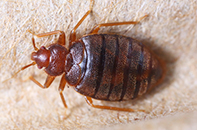
BED BUGNocturnal parasite, all stages feeding on mammalian blood, principally human but also dog, cat or rodents. Hide by day in crevices in beds...
Read More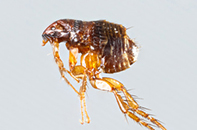
FLEAParasitic as adults, adapted to living among the fur of the host and feeding on its blood. Soft furnishing. Larvae live on floor in bedding of host...
Read More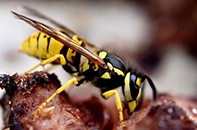
COMMON WASPTemperate species forming nests in soil banks, roof spaces, wall cavities and trees. Nests formed of paper (chewed wood) and may become very large....
Read More
EUROPEAN HORNETTemperate species forming nests in wooded areas, wall cavities and trees. Nests formed of paper (chewed wood) and become very large. Colonies only....
Read More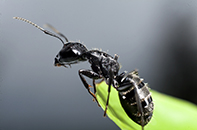
BLACK ANTTemperate species living in soil or in association with dwellings. Form nests in gardens, under paving stones, in foundations or occasionally within...
Read More
PHARAOH'S ANTTropical species found only in heated buildings in the UK. Small, mobile and active at all times of the day. Form large, apparently unstructured, nests in....
Read More
GERMAN COCKROACHPrimarily nocturnal, a pest of warm, humid conditions. Found in the UK only in heated buildings, not normally outside or in underground...
Read More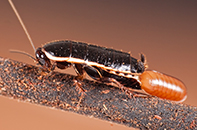
ORIENTAL COCKROACHPrimarily nocturnal, a pest of warm environments but tolerant of colder conditions. Nymphs and adults cluster in groups in harbourages...
Read More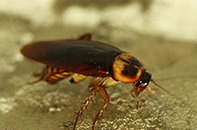
AMERICAN COCKROACHPrimarily nocturnal, a pest of warm, humid conditions. Found in the UK only in heated buildings, not normally outside or in underground heating...
Read More
CLUSTER FLYAdults live harmlessly out doors during summer but may enter buildings (usually roof spaces and lofts but also through windows into rooms) in autumn....
Read More